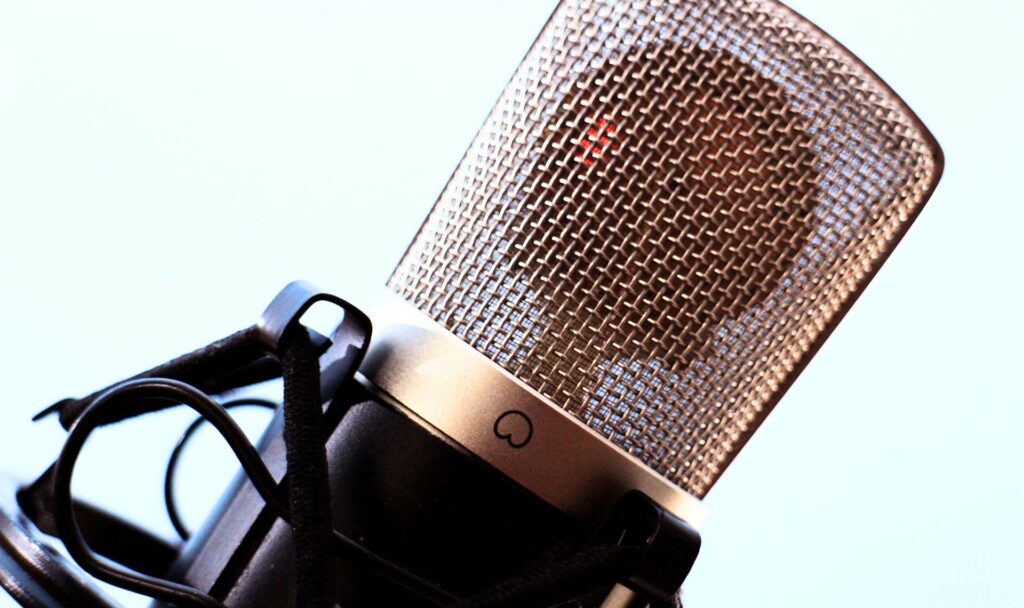
We walk you through the different types of microphones and their common uses. Learn everything you need to get the right mics for your setup.
Different microphone types capture sound in specific ways. Some types are meant for specific instruments, vocal timbres, and other sound sources. Some mics have good noise rejection and directionality for live performance, while others are designed to capture sonic nuances that are needed in Recording Music.
This article will help you understand what the different types of mics are. And how each one is used on stage, in recording music, and in music production.
You’ll also learn about the features and specifications of different microphone types. And know how to use them to your advantage. But first, let’s answer the most basic question.
What are Microphones and How do they Work?
Microphones capture air pressure changes via a diaphragm, a tiny piece of material that vibrates in response to sound waves. These vibrations are then converted into electrical signals that correspond to the sound waves. These sound waves can then be amplified, recorded, and processed.
These components can be tweaked to capture specific types of sound sources. The variations result in the varying responses and characteristics of the different microphone types.
The Three Main Types of Microphones used in Music
The biggest distinction between microphone types is the transducers they use.
There’s no one-size-fits all microphone type. Certain types of mics work better depending on the sound sources being captured. Ambient sound is also a factor in selection. Choosing the right microphone type for different situations will give you better results.
There are three main types of microphones based on transducers:
Dynamic Microphones
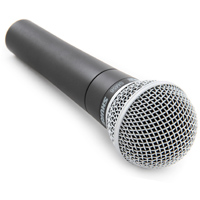 If you’re looking for something reliable and versatile, then start with dynamic mics.
If you’re looking for something reliable and versatile, then start with dynamic mics.Dynamic mics capture sound at high sound pressure levels. This is because of their moving coil magnetic diaphragm design.
You can use dynamic microphones on loud sound sources like bass and guitar amplifiers. Even drum kits can be captured without worrying about unwanted distortion or damage. With the right amount of gain, dynamic mics also work well in quieter settings. Compared to a condenser microphone, they are also great at recording vocals that are more on the aggressive side.
Condenser Microphones
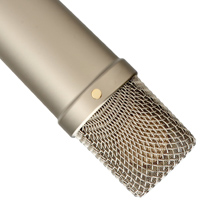 Condenser mics have a thin conductive diaphragm that sits close to a metal backplate. This configuration works like a capacitor wherein sound pressure vibrates the diaphragm. This changes the capacitance to convert sound waves into an electrical signal.
Condenser mics have a thin conductive diaphragm that sits close to a metal backplate. This configuration works like a capacitor wherein sound pressure vibrates the diaphragm. This changes the capacitance to convert sound waves into an electrical signal.Condenser microphones use capacitance instead of moving coils. This way of capture increases fidelity and sound quality. This makes condenser mics ideal for a home studio setup.
Note that this method of sound capture requires power. so you’ll need a mixer or direct box with phantom power (except in cases where batteries are used). Whatever instrument you are trying to record, condenser mics will get the job done so long as the sound pressure levels aren’t too high. Remember to handle them with care as they are not as sturdy as dynamic mics.
Ribbon Microphones
 Ribbon Microphones were very popular in the radio industry. The light metal element used in ribbon microphones allows them to pick up both the velocity and displacement of the air. This allows for improved sensitivity to higher frequencies without harshness. Ribbon mics sound detailed despite the warmer sound signature.
Ribbon Microphones were very popular in the radio industry. The light metal element used in ribbon microphones allows them to pick up both the velocity and displacement of the air. This allows for improved sensitivity to higher frequencies without harshness. Ribbon mics sound detailed despite the warmer sound signature.Like dynamic microphones, they don’t require phantom power. There are active ribbon microphones in the market that do need phantom power like condenser microphones. Do check if it’s an active ribbon microphone before turning on the +48v on your interface or preamp.
Modern production ribbon mics are now sturdier than their old counterparts. They’re viable for live multi-instrument recording on venues where noise level is manageable. You can also use ribbon microphones for recording if you’re looking for vintage vibe. Combining ribbon microphones with dynamic or condenser mics opens new tonal possibilities.
Cardioid Microphones
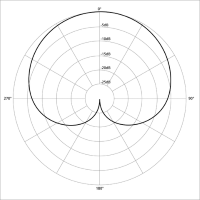 What is a cardioid microphone? The Cardioid pattern (also called unidirectional) captures everything in front of the capsule. It is less sensitive from other angles. This front-focused pattern lets you isolate the sound source from unwanted ambient sound. It is ideal for situations where you need noise reduction and feedback suppression.
What is a cardioid microphone? The Cardioid pattern (also called unidirectional) captures everything in front of the capsule. It is less sensitive from other angles. This front-focused pattern lets you isolate the sound source from unwanted ambient sound. It is ideal for situations where you need noise reduction and feedback suppression.Dynamic microphones like the Shure SM57 are known for their cardioid pattern.
Cardioid mics are the most popular type of microphone polar pattern. They are used in live performances, from karaoke to big arena concerts. Other common uses include miking loud instruments like drum kits and guitar speakers. Note that these types of mics add subtle sound coloration when the source is off axis. This is why mic position when speaking and singing is very important.
Super/Hyper Cardioid Microphones

 These mics have the same front directionality but have a narrower area of sensitivity compared to cardioids. This results in improved isolation and higher resistance to feedback.
These mics have the same front directionality but have a narrower area of sensitivity compared to cardioids. This results in improved isolation and higher resistance to feedback.These mics have the same front directionality but have a narrower area of sensitivity compared to cardioids. This results in improved isolation and higher resistance to feedback.
Because of their enhanced ability to reject noise, they are ideal for loud sound sources. They are also good for noisy stage environments and untreated recording rooms. Mic directionality and improved noise rejection are its main advantages over cardioid mics.
On the flip side, back rejection is a bit compromised. You will have to position unwanted sounds like Stage Monitors and drum kits on the dead spot sides.
Omnidirectional Microphones
 These are microphones that capture sound waves from all angles. Because of their non-directional design and zero rejection, these mics capture nuances better. And since it captures everything, it produces a more natural sound.
These are microphones that capture sound waves from all angles. Because of their non-directional design and zero rejection, these mics capture nuances better. And since it captures everything, it produces a more natural sound.Condenser microphones with this pattern are used in studios and other venues (like old churches) with great acoustics. It can also be used for live recording of multiple instruments, as long as the noise level is low.
The obvious downside is that they lack background noise rejection. And this is the key consideration when you’re choosing between cardioid vs omnidirectional mics. They are also prone to monitor feedback, unsuitable for loud and noisy venues.
Figure-8 Microphones
 This polar pattern follows the “figure 8” shape. This means that it captures the sound of both the front and back while rejecting the two sides. Front and back sensitivity are ideal for stereo recording. They are also great for capturing two or more pre-positioned instruments.
This polar pattern follows the “figure 8” shape. This means that it captures the sound of both the front and back while rejecting the two sides. Front and back sensitivity are ideal for stereo recording. They are also great for capturing two or more pre-positioned instruments.Figure-8 microphones are similar to omnidirectional mics, but with sound rejection on two sides. This polar pattern is used on ribbon mics and some large diaphragm condenser microphones.
Shotgun Microphones
 Shotgun mics, also called Line and Gradient, has a tube like “gun-barrel” design. This makes their polar pattern even more directional than hyper cardioids. The capsule is at the end of an interference tube, which eliminates sound from the sides via phase cancellation.
Shotgun mics, also called Line and Gradient, has a tube like “gun-barrel” design. This makes their polar pattern even more directional than hyper cardioids. The capsule is at the end of an interference tube, which eliminates sound from the sides via phase cancellation.
This results in a tighter polar pattern up front with longer pickup range.Shotgun mics are commonly used for film and theatre. They also make great overhead mics for capturing things like singing groups, choirs, and drum cymbals.
Switchable/Multi-Pattern Microphones
These are microphones that can change between different polar patterns. This allows for more positioning options.
Many of today’s USB condenser microphones have this feature. They let you switch between patterns by simply flicking a switch. Others provide the same flexibility by changing the mic head.
The advantage that these mics offer is obvious, more positioning possibilities and versatile usage. The downside is that there are more parts that can breakdown. Just remember to be careful when handling these mics.
Small Diaphragm Condenser Microphone

Small diaphragm condenser microphones are commonly called pencil mics because of their thin cylindrical shapes. Their compact design makes them lighter and easier to position.Interestingly, they are designed to be stiffer, handle higher sound pressure levels, and have wider dynamic range. Small diaphragm condensers in particular are great for acoustic guitars. Other uses of small diaphragm mics include miking hi-hats, cymbals, and other instruments. Known limitations of small diaphragm mics are increased internal noise, and low sensitivity.
Large Diaphragm Condenser Microphone
 The bigger the diaphragm, the more it can sense air vibrations. More vibrations captured, means more of the sonic details are faithfully reproduced.
The bigger the diaphragm, the more it can sense air vibrations. More vibrations captured, means more of the sonic details are faithfully reproduced.Unlike small diaphragms that are stiff, large diaphragms move easily. This allows them to detect even faint differences in sound pressure levels. The result is a more transparent and natural sound.
This affinity to High Fidelity has made large diaphragm mics a staple in recording studios. They are the most common configuration used on modern USB mics.
You can use them to record just about anything, from vocals to guitars and other instruments. Just make sure that you keep the volume in check because they can distort when sound pressure level is too high. Most mics used with USB and iPad Audio Interfaces are large diaphragm condenser mics.
Medium Diaphragm Condenser Microphone
 Medium Diaphragm mics are sometimes called hybrid because they combine the characteristics of small and large diaphragms.
Medium Diaphragm mics are sometimes called hybrid because they combine the characteristics of small and large diaphragms.Medium Diaphragm mics combine the characteristics of small and large diaphragms. As such they are often considered hybrids.
They tend to have a fuller and warm sound similar to large diaphragms. But they can also retain some of the high frequency content that small diaphragms could.
These are modern microphones that are gaining reputation in both live and recording situations. You can skip these mics if you already have large and small diaphragm mics to work with.
Vocal Mics
 For live vocal performances, stage volume can get loud, making feedback suppression important. This is why the best microphone for vocals is a cardioid mic. See our guide to the best mic for singing live.
For live vocal performances, stage volume can get loud, making feedback suppression important. This is why the best microphone for vocals is a cardioid mic. See our guide to the best mic for singing live.Recording vocals on the other hand is a different undertaking. It requires more attention to the singer’s nuances, and post production processing like a Deesser. As such, the best mic to record singers would be a large diaphragm condenser microphone. If you are going for a more vintage sounding vocal recording, use ribbon mics or go for good old dynamic microphones instead.
Small diaphragm omnidirectional mics and shotgun mics can be used for capturing choirs and singing groups. They are especially useful when choirs perform in venues with great acoustics, like churches.
There are plenty to consider when it comes to vocal mics, including Dynamic vs Condenser Mic options.
Here are our vocal mic recommended lists:
Drum Mics
 Because acoustic drum kits are naturally loud and punchy, you’ll want to go with dynamic microphones for the snare, bass, and toms. Small diaphragm microphones can then be used to capture the nuances of the hi-hat, ride, and cymbals.
Because acoustic drum kits are naturally loud and punchy, you’ll want to go with dynamic microphones for the snare, bass, and toms. Small diaphragm microphones can then be used to capture the nuances of the hi-hat, ride, and cymbals.There are specialized mics that are fine-tuned to handle the different frequencies and SPLs of each part of a drum kit. You can either get them one by one or go for convenient drum kit mic bundles. In the studio, you can set up an omni or ribbon mic to blend some ambiance into your drum tracks.
Here are the mics we recommend for drums:
Electric Guitar Amplifier Mics
 Close miked guitar amplifiers are as loud, sometimes louder than drum kits. They require mics that can handle high SPL. Your best bet is a cardioid or hyper cardioid dynamic mic that is well positioned in front of the amp speaker.
Close miked guitar amplifiers are as loud, sometimes louder than drum kits. They require mics that can handle high SPL. Your best bet is a cardioid or hyper cardioid dynamic mic that is well positioned in front of the amp speaker.It is worth noting that mic placement substantially changes the resulting sound. You can experiment with different positions until you find what you like. Or you can go with tried and tested positions that have worked for many live performances and recordings.
Acoustic Guitar Mics
 Unamplified acoustic guitars have a softer sound with immersive nuances. These types of instruments need the fidelity and quality of large diaphragm condenser mics.
Unamplified acoustic guitars have a softer sound with immersive nuances. These types of instruments need the fidelity and quality of large diaphragm condenser mics.You can also go for a well-placed Cardioid condenser mic or Figure-8 pattern ribbon microphone. This will depend on the situation and ambient noise level. Setting up an extra small diaphragm mic will work wonders in capturing the higher frequencies of an acoustic guitar. Keep in mind that good guitar micing is a skill well worth developing.
Microphone Polar Patterns
Polar Patterns describe how microphones pick up sound waves. They show which direction mics ‘listen’ and which positions have less sensitivity. Having a good grasp of polar patterns will help you select the right mics in different situations. Knowing the directionality of mics will help you minimize unwanted noise and bleed.
Diaphragm Sizes
Microphones pick up sounds through their diaphragm, a thin material that vibrates when it comes into contact with sound. This vibration converts sonic energy into electrical energy.
Diaphragm size affects the microphone’s performance. It impacts sound pressure level handling, sensitivity, dynamic range, and internal noise level.
There are three main classifications for mic diaphragms, based on the diaphragm’s mass.
How are Microphones Used in Music
Here we look at the main purpose each kind of microphone is typically used for. This is a good guide to get you started and once you gain experience with each mic type you’ll find additional applications that work for you.
Microphone Gear Guides
These guides explain what you need to consider when buying microphones and show you the mics with the highest Gearank scores:
Microphone Summary
We’ve talked about the main types of microphones you’ll use in various situations, however as you gain experience you’ll also learn how to break with convention. If there’s anything more you would like to know about microphones then please feel free to ask in the comments below.
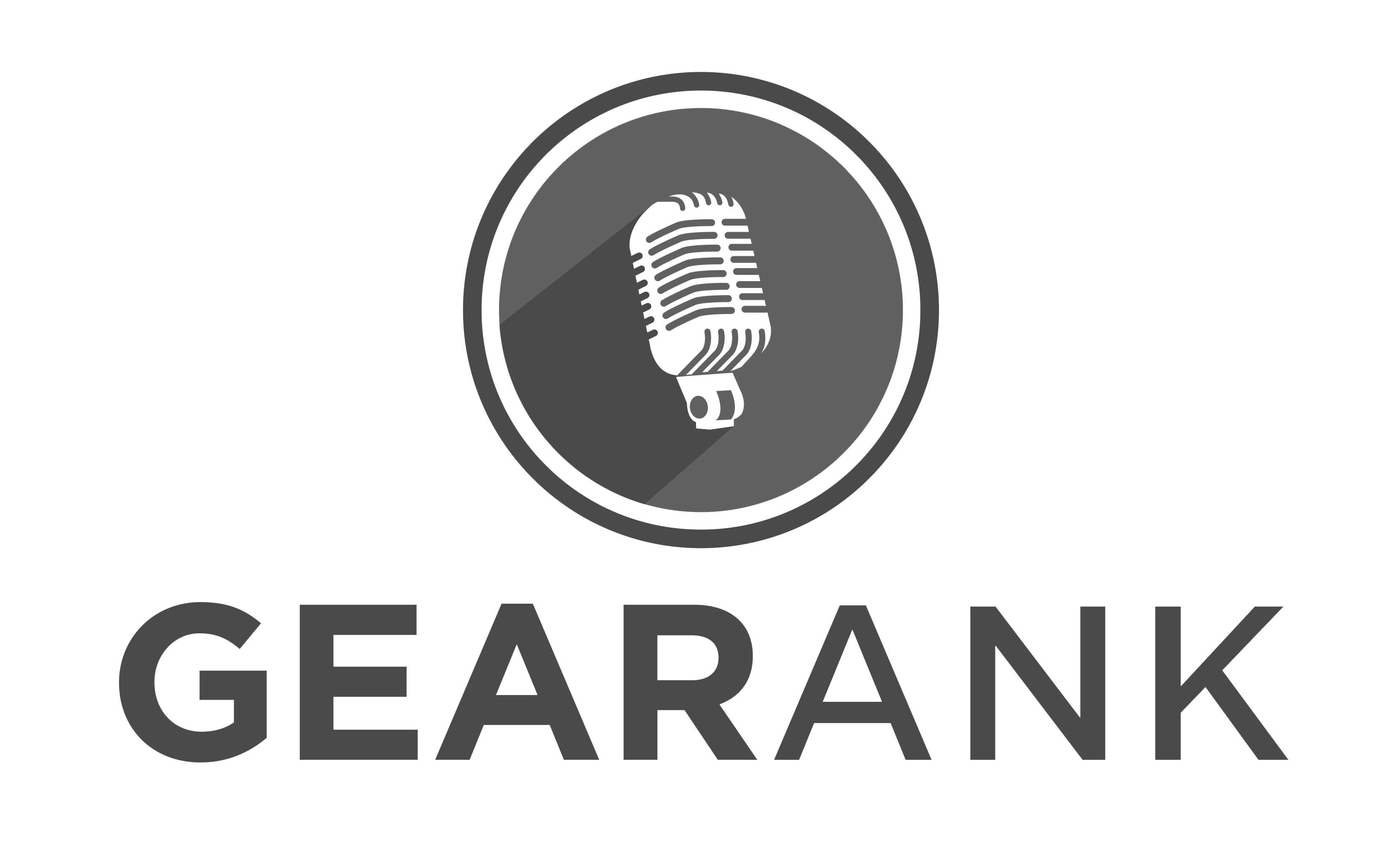
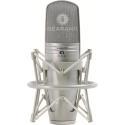
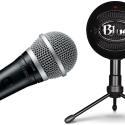
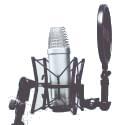
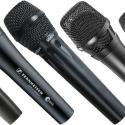
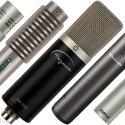
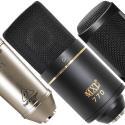
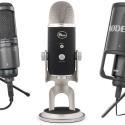
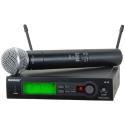
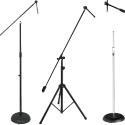
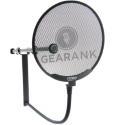
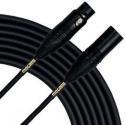
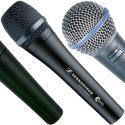
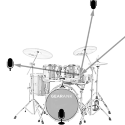
The shot gun mic was new for me. This is great!
What is the best sort of microphone for using for internet chats via messengeer
Hello, Thank you for the great article. I am looking to mic an area in an outdoors horse arena. My goal is to be able to have a rider in a good size area (200+ sf) be able to be picked up (speaking/projecting their voice)when they are in that area. I am thinking shotgun but not sure if they cast too narrow an area. It would need to be fairly weather proof and hopefully wireless. Any suggestions would be greatly appreciated.
Hi Matthew,
A mid to long shotgun mic would be appropriate for your situation. If you want more directionality, go with the longer one. If you want more environment, get a mid length mic. I recommend the Audio Technica AT8035
-Raphael
Thanks Raphael!
I’m looking for a microphone/array that will block out noise by the distance from the source. In other words I only want to hear sound that originated under 3 meters from me.
Hi Eitan,
We don’t have a guide for this mic type but I think what you’re looking for would be a shotgun microphone. They are commonly used in filmmaking to capture a specific sound source in a narrow area.
Here is an instructional video from Shure about Shotgun Mics: How Shotgun Microphones Work
-Raphael
I would like to know what kind of microphone is suitable for machine-monitoring in a noisy factory?(Strange sound might be made during machine operating incorrectly)
In “Pumped Up Kicks”, the singer’s voice is sort of distorted throughout the entire song as if it’s coming out of a radio, and in the music video, you can see the microphone he is using. I would like to know the name of the microphone/technique being used here. I think it is the same one used in the first part of BTS Jung Kook’s “Still With You” before his voice sounds like the normal studio voice. I have hear something about this being a talkbox effect? I don’t really know
Hi Ema,
I wouldn’t base the kind of mic a singer is using on a music video. All I can say is that the voice has been processed in post with plugins or analog gear to have that effect. It’s more of a clever application of high cut and low cut with some saturation during the mix.
-Raphael
Ok, thank you 🙂 I had no idea
I’m a journalist which microphone is the best for my work?
Hi Hauwau Allyu,
For journalism, a shotgun mic picks up more of your voice and rejects sound that isn’t directly in front of it. Live news field reporters use shotgun mics to focus on their voice especially in loud environments.
-Raphael
Which mic will be best for recording vocal and guitar at the same time? Which mic can capture vocal and guitar together with same intensity?
Hello Partha Jana,
Condenser mics would be your top pick. As for capturing guitar and vocals together, mic position plays a crucial role as to what you capture.
-Raphael
Thanks for the article!
In an exhibition setting, I want to have the sound of people stepping on a plastic carpet louder. Considering that most of the mics are noise cancellation, I want the exact opposite effect. Which type of microphone could I use?
Thank you!
Hi Sofia,
One type of mic you can try is something called a “boundary mic”. It’s a floor positioned mic that picks up sound by reflections. I’ve never tried a boundary mic on carpet but on a flat surface, the proximity of the footsteps becomes more apparent and you can blend that in with another mic placed elsewhere.
-Raphael
I used to love american made .. but there is not any made in usa … so i changed to made in germany
Hi if I may know, where does boom mic lie and how many types of boom mics do we have?
Don’t quote me but I believe a boom would be in the shotgun mic category given it’s shape and use.
Could you please include all the different microphones that go with their ideal pick-up pattern?
We publish many microphone guides which are based on features such as price, diaphragm size, diaphragm type (dynamic, condenser etc.) and type of connection (USB or XLR), however we haven’t had any previous requests to base one on polar patterns (pickup patterns).
Please elaborate on why you want us to make a list based on polar pattern types and we’ll consider the request.
I would like to record harmonica against karaoke or backing track. (That will go go a sound card). Output will go to another input of soundcard.Which mic would you recommend?
I am looking for a whole room mic to to connect to my I phone7 to live stream a church service.
I have a home made studio for recording known as The Legend Gospel studio, I need wireless microphones that I can use for best results of my works.
Hi Maurice!
You’ve come to the right place! We have a guide up for The Best Wireless Microphones that you can read to check which one suits your studio’s needs!
Though wireless mics are usually used live, they’re also great studio tools especially when filming livestreams as there won’t be any cables lying around the studio area when you stream.
-Raphael
Could you please include all the different microphones that go with their ideal pick up pattern?
Brilliant piece. Just what I’ve been looking for. This article is now saved in my “Bookmarks” header for future reference.
our church is doing drive in church in the Covid epidemic, We are then sending it to facebook live so those at home can listen also. We have a lot of wind here and it sometimes takes over the mic. What kind should we use in this windy environ we live in? Newbee here.
A shotgun mic with a fluffy windshield
This is really awesome.
What would be the best microphone for filming doctors on a camera
Sir kindly suggest me a mic which is most sensitive mic to capture all types of sounds inclusive with surrounded noise as well with-in the open field.
Note: (Relevant to stumps mics)
Hi,
what type of mic would be suitable for live outdoor/indoor choir performance of school aged students?
Recommendations on microphones for live performances of ensembles?; trying to create more of a coffee house feel. Is there a microphone that would pick up a keyboard, violin player and 3 vocalists?
I am looking for miniature Mike that is sensitive enough to pickup heart beat sound.
Pretty much any microphone that you can place on someone’s chest aught to work – for extra sensitivity go for a condenser rather than a dynamic mic.
Which type of microphone used for gaming and recording and streaming?
Condenser mic is best for studio recording, but are very fragile. They do however give you the best sound quality overall because they pick up sound in close range and “shut out” ambient sound. I’d say maybe a Lavalier mic would be great for gaming or the ones that come attached to a headphone.
Hi, i’ve purchased a Sony HXR nx5E Camcorder and would like to try both indoor and out door interviewing, i have a shotgun mic with the camera, what would you advise I use to achieve best quality?… thank you. Alan
What are the types of mics which are used to record the Foley Sounds? Either inside or outside the studio.
Hi, So helpful. I’m running a club at school that will include foley sound work, radio dramas, and podcast interviews. Three setups. Thinking of two sets of lavalier mics for the interviews going into a laptop or possibly a used H1 or H2 Zoom for field work. Unsure what to get for the radio dramas. Limited budget for sure. Any thoughts? Thanks!
I teach 20 3rd – 5th grade children to play ukulele and sing each year. At the end of the school year the kids give a recital, but without amplification. This year we have money for a microphone — what is best for a group of this size? Thanks!
Assuming that you already have a PA System to plug your mics into, then I’d usually go with a pair of Cardiod Condenser mics like these from Samson – but you will have to check with your sound technician first to see if your PA System provides phantom power to operate the mics.
If you don’t have phantom power then you’ll need a couple of dynamic mics. The industry standard is the Shure SM58 however the GLS Audio ES-58-S is a good budget alternative.
I am looking for professional quality mic for a youtube channel. I would be grateful for any recommendations or suggestions.
I am really struggling for choice of mic. We have a ukulele group and sing and play. Some of us are comfortable on dynamic mics, not scared off by the sound of our own voice. Others, however, well, a little timid. There are 12 of us (more sometimes) our harmonies are great but we need to be able to pick up the overall sound – not sure what kind of mic would be best, only one or two of the ukes have pickups, so we need to mic up some of the vocals and pretty well all of the ukes. What do you suggest?
Hi Hans, I know this is a long shot but I see that this question was never answered. I have the exact same issue with our ukulele group. Did you find the right equipment to resolve the problem?
Thank you,
Jack H Seacoast Ukulele Players
Hello Jack,
It’s hard to go wrong with a pair of industry-standard dynamic mics like the Shure SM57. You can also opt for condenser mics like the Neumann KM 184. The tricky part is mic placement, and this will vary based on how you’re group is positioned and the venue you are playing.
If you want a more balanced sound for big ensembles – with no ukulele overpowering others – then try positioning a stereo pair at different distances.
You can also close mike the ukuleles, and set up a mic positioned at a distance to add in natural ambiance.
Hope these tips help.
That is a huge help. Thank you very much for the quick response
Which mikes only pick up close (noise cancelling) and which are the ones that pick up everything around?
Microphones don’t use noise cancelling, instead they have different polar patters to determine which directions they pick up sound from.
Cardioid mics pick up sound from in front while Omnidirectional mics pick it up from all directions.
Hi. I am looking for a mic suggestion for vocals where I picture the mic will be on boom over a large drum with multiple singers sitting around it. I intend to mic the drum with a kick mic on a short stand from below.
It would be ideal if the vocals mic could somehow reject below it to some extent as the drum can be very loud.
The room is big and the speakers are a long way from each drum. But it is a large gymnasium so acoustics are lively.
To make matters worse it can’t be too expensive (unless you suggest a mic I have lol) . I need to mic 4 groups at the same time.. I do this event only once a year.. and due to cultural protocols there is no money exchanged.
… But I want to do it right so I’m open to any ideas.
Right now I have one wireless 58 on a boom stand and a tech moves it from drum to drum between songs. none of the singers are on axis so they sound far away, and the drum is boomy because the mic is too far above it.
Any help, is very appreciated.
I was wondering if i could use a lapelle mic for live band use. My aim is to make more of a show of running round a venue but carrying on vocally singing but wondering about issues of feedback etc.
That should work just fine – it’s common practice in musical theater and I’ve used wireless lavaliere mics (the technical name for lapel mics) in that context successfully many times.
What would be a decent mic to plug to a phone and record through a phone. I have flstudio installed in my phone and I want have a better quality recording guitar and vocal. Could you please guide me. Thanks.
Hi! I was wondering what do you mean by “large diaphragms move easily”. Small diaphragms, in general, have faster transient response because they have less mass, which would mean that small diaphragms move easily. However, I don’t know if what you’re trying to say is that larger/heavier diaphragms tend to move easily in terms of displacement, which makes them more sensitive, but still have a slower reaction to changes compared to small diaphragm mics. Thank you very much, in advance, for your reply.
I need a microphone that can be used at a podium, but does not require the speaker to be up-close and personal with it. I need it to pick up sound from 2 to maybe 3 feet away without having to directly focus at it. Got any suggestions?
What type of microphone is used for recording sound from ac’s and UPS’s and the noise obtained from other electronic devices?
That’s not a topic we cover here, maybe one of our readers will have an answer for you.
I play acoustic guitar (nylon strings)and sing unplugged in aged care homes. I want to boost my volume using just one mic for both voice and guitar preferably placed about two feet in front of me (on music stand). I would plug it into a Vox mini amp (mic input). What sort of mic should I use?
The Vox Mini amps don’t provide phantom power for the mic so you’ll need to get a dynamic mic. They also only have a 1/4″ input jack so you’ll have to get a mic with a 1/4″ plug on the end of its cable, or get an XLR to TRS adapter plug if you get a mic with an XLR connector.
Thanks Jason. I already have a dynamic mic but it can only work up close to either my voice or the instrument but not both. So are you suggesting that (if I had phantom power) a condenser would be better in my situation than a dynamic? What about a condenser with its own battery power?
It seems like the core of your problem isn’t really with microphones, it’s that you’re trying to use an amplifier in a way it was never really meant to be used.
What you need is an amp that has separate channels so you can mix the signal between the guitar and vocals – this requires either 2 mics or 1 mic and pickups on your acoustic guitar.
There are some excellent acoustic amps designed exactly for this purpose, and some like the Roland AC-33 are also battery powered like your Vox Mini.
Check out our guide to The Best Acoustic Guitar Amps.
Many thanks Jason.
Small diaphragm mics are the best in podcasting since they are stifle, small and easy to adjust.
Personally I have carried investigation upon it and I recommend them.
ARIKA DAVID MOUNT KENYA UNIVERSITY
I am taking singing lessons and setting up a small home studio along with a professional karaoke machine. I need a microphone that I can practice on and can take the abuse of the use of the karaoke machine. What microphone do you suggest?
Instead of giving you one mic recommendation, I’ll point you to our 2017 updated list of the best live vocal microphones, you can check them out to see which ones fit your budget and singing style.
Which type of mics we should use for singing?
If you want a mic for recording then check out our guide: The Best Studio Mics For Vocals.
If it’s live performance you want one for then look at the guide: The Best Live Vocal Mics.
I was wondering if anybody could inform me what the best microphone is used for a VIOLIN and SAXOPHONE you see my son and daughter are about to enrol at Juilliard School of Music and they’ll need it for the Orchestra, Thank you
I would check with the school to see what they recommend – they might also have group buying discounts organized with a particular seller.
Hi. I’m a female vocalist in worship band looking for a mic which carries high end and captures bell like soft moments but also gutsy texture range is d below middle c 2 octaves. Good pitch. Problems sometimes with cutting through the mix . Smooth mellow sound vocal. Suggestions?
Hi Beth, you didn’t say if you wanted a mic for live performance or recording purposes, but in either case we have a buying guide for you to read:
If it’s a live vocal mic you’re looking for then be sure to also read the comments section of that guide because you may find the answers there to be quite helpful.
I’m in a situation where I need to record EDM coming from a speaker using a Mic. What microphone works good for this?
I would say don’t do it that way – you will get much better results taking a line out from the source rather thank miking speakers.
Is there any particular reason why you have to use a mic?
I’ve been miking a classical guitar in a jazz combo with a Shure dynamic mic, but I’ve heard that condensers might be better for guitar. I’m having trouble being heard over the other musicians. Will the condenser give me increased volume? Or is it too sensitive? I’m either too quiet, or I have feedback issues.
Condenser mics are generally preferred for classical guitar, however that’s mainly due to their frequency response and resulting tone rather than volume.
The best way to combat feedback issues is either with an acoustic preamp or specialized acoustic amps which have feedback detection or suppression systems.
I direct a group of theatre students who meet in a church. When the students are directly behind their microphones the sound is great. Or when using a lapel mic. I want to have a more fluid wash of sound. The stage is a hollow floor, too, so we have to be careful for footstep noise. I am thinking a ribbon, but not sure. What do you think? Thanks in advance.
Ribbon mics are generally used for recording. For the theater you usually use wireless lapel mics for the leads and overheads for the chorus.
I play Congas/Bongos in a loud environment. My dynamic mics are picking up other instruments and crowd noise. Which mics are best at isolating just what’s in front of them? I’ve heard some folks say SM57 or Beta 57a, but I’m not clear as to which cardoid type is best for me.
Only vocal, drums and guitar recommendations?? The world isn’t only rock-n-roll!
Please write something about [acoustic] piano and wind instrument mics, I’d be really interested to read that.
At the moment we are primarily focused on producing guides for rock/pop/folk/electronic music because that’s what most of our readers want.
I’ll add your suggestion to the list of microphone topics we will consider, but we already have several other mic topics on our publishing calendar that we’ll cover first.
In the meantime you might find this guide from Sound on Sound very helpful for selecting and using mics on acoustic piano.
Great post guys this is a well laid out list of mics!
Just wanted to add for anyone else with a similar question that this is also an excellent resource for miking pianos and this is a good look into miking brass and woodwinds.
Hope this is helpful!
I am a public speaker and require a microphone that will be suspended on my lapel or tie and produce maximum quality as i move round a hall seating 1000 people.
You need a Wireless Lavalier Mic system for that. These range in price from $100 to $1000 with an entry level system being one like the PylePro PDWM3400 and higher up the scale there are systems like the Sennheiser EW 100 ENG G3-A.
What mic is best for television stations and radio?
This question is a bit too broad to answer with confidence, but assuming you are talking specifically about mics for on air announcers then you’ll want something that has a cardioid pickup pattern to reject any sounds that don’t come from directly in front.
We don’t provide any guides to professional TV or radio studio mics, but if you have a small setup then you might find our guide to USB mics for Recording & Podcasting useful.
What mics are appropriate for vocals and instrumentation when you want to have a live recording of a concert?
Hi wanted to ask the best mics for studio broadcasting.
Many have had success with the industry standard Shure SM57 for capturing both vocals and instruments in live situations, and it is the easiest to recommend for those who are starting out.
Note that there are other instrument and vocal specific mics which can give you better results, but this will depend on the instruments that you’re going to capture, the quality of the sound you want, and your budget.
I need a good mic for voice-over work. I bought a USB mic but was having issues with a “hiss”. All attempts to get rid of it have been futile. So I’ve decided to get a new mic with an audio interface. I can’t decide between a large or medium diaphram. A friend recommended the Scarlett Studio USB Recording Package (1st Gen). A little help please!
USB Mics are more convenient and easy to setup making them ideal for voice-over work. But since you mentioned you were getting unwanted “hiss”, have you tried moving to another spot in the house to rule out interference? Also have you tried at least two USB mics to rule out quality issues? I recommend giving USB mics another try, given the success that many are having with them. We have a gear guide that specifically discuses top rated USB mics if you want more information.
If your friend is specifically recommending the Scarlett Studio 2i2 Bundle, and you’ve decided to switch to an audio-interface setup, then I concur. Focusrite is well known for their home/mobile audio interfaces, and the Scarlett 2i2 is highly rated, so it’s an easy recommendation.
Thanks so much for the help. I have tried recording in many different locations including the sound proof recording studio at the radio station I work at. Still got the hiss. Unfortunately, I don’t have another USB mic.
Thanks for the link. Most of them are “dream mics”! But I’m a little tight with budget for now. Hence, I’m opting for the Scarlett Studio 2i2 as it comes in a package which seems more cost effective.
Once again, many thanks for the help! It is much appreciated!
I need a mic for my class room, occasionally, to make my voice loud enough. So what kind of mic do I need? Thanks.
In a classroom setting you need your hands free so the type of mic you’re looking for is known variously as a Lapel or Lavalier microphone – and you’ll want a wireless system.
These aren’t typically used in music production so we don’t have any specific guides on this website, however here is an old one at B&H that might help you.
I want to know whether a microphone can be connected to the subwoofer of a home theatre System for homely uses ?
We don’t provide advice on home theater systems – we try to stick with the gear we understand at the pro audio end of the spectrum.
That said, it’s quite an unusual idea you have there. If you can tell us exactly what it is your are trying to achieve then we may be able to steer you in the right direction.
My guy Jason you’re on it with everybody replying I like the sound of you we should meet ;)))))
Nice to e-meet you Sarah! I’m into replying to questions about music gear and playing my nylon string guitar 🙂
I do a lot of narrating for official functions and events and I am looking to purchase my own personal mic. What type of mic is the best for public speaking?
Would a dynamic or condenser mic be best for me? Also, if you do
recommend a condenser, what can I use to provide phantom power if the sound system they are using does not inherently have the capability to produce it?
I am looking for professional quality mic that I can take from event to event with me. I would be grateful for any recommendations or suggestions.
A dynamic mic is definitely a better option for public speaking because they are more robust, simpler to operate and generally less expensive than condenser mics.
I would recommend the Shure SM58 or the wireless version Shure SLX24/SM58.
I hope this helps.
Which type of microphone is best for making podcasts?
Omnidirectional microphones
There is no best one as everyone’s voice is different but the sm7b is popular in radio stations but it needs a lot of preamp gain.
I would say the Cousins ZX49J. I made this mic in my basement my very self and I am going on Shark Tank very soon, so if you want to be one of the first people with my mic, just reply to this comment and it will cost you $15, this is a very good deal because it may cost much more in the future.
I recommend the Shure SM7B. It’s a cardioid mic
A good choice for podcasting – we have more information about it here on Gearank.com: Shure SM7B
UPDATE: We now have a guide specifically about USB microphones for Recording & Podcasting.
Good Evening,
Please send me your guide or list of Mikes for recording on USB,
& reharsal of songs or podcasting,
Many Thanks
We don’t send out lists, but the list you’re asking for is available in our guide to The Best USB Microphones.
For recording podcasts indoors then a Condenser Mic is the best way to go. You can get a USB one so that you don’t need an audio interface – just plug it directly into your computer or tablet.
If you’re recording outside, such as interviewing people in public places, then it’s generally best to go with a Dynamic Mic which can take the punishment of being carried around in bags and knocked a few times – you can find these in our Live Vocal Mic Guide.